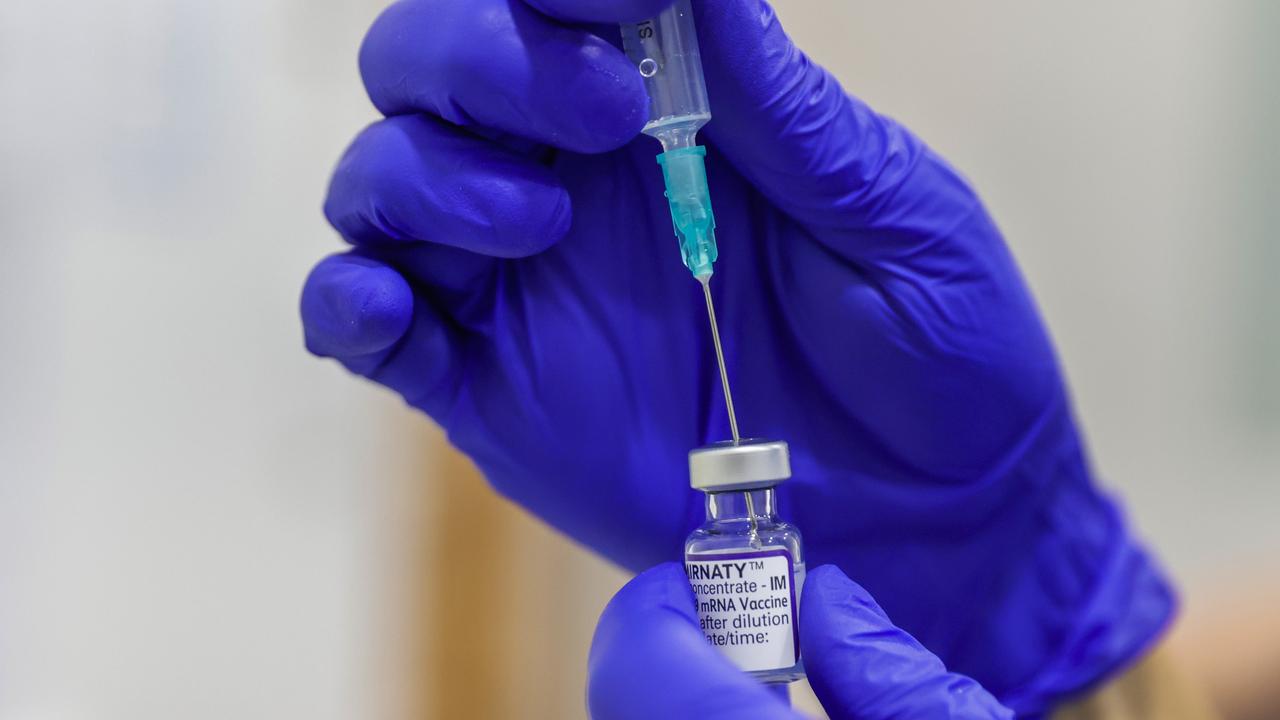Covid NSW: Leaked emails show holes in hospital at home system
Leaked emails show the system to keep people with Covid home and out of hospital is plagued with problems and confusion amid rising patient deaths.
NSW Coronavirus News
Don't miss out on the headlines from NSW Coronavirus News. Followed categories will be added to My News.
Leaked emails from medical staff regarding the Hospital in the Home (HITH) program for Covid-positive patients reveal the system is plagued with confusion and constant changes.
There have been 29 patients who have died of Covid in the home since June, one in 10 of the total 288 deaths, and half were being treated in the home care system.
One email, sent on September 22 to staff at a western Sydney hospital, revealed the frustration with regards to constant changes being made to discharging patients from the in home program.
“Sorry for yet another HITH email … unfortunately the process is constantly changing!
Just to clarify, the EMR (electronic medical record) Clearance Discharge has changed, they no longer want us to use the letter template by (name removed), they want us to use the pre-completed document named ‘NBM Covid Clearance’ by (name removed).”

Another sent on September 8 reveals files of patients in HITH have gone missing.
“If you do any admissions to HITH please allocate them a risk category. This will change how often they are called. Also, due to files going missing, patients requiring an admission will be on a list prepared by the team leader.”
Got a news tip? Email weekendtele@news.com.au
Every Local Health District has dedicated Covid community care teams who are to provide virtual care and daily clinical and welfare checks for patients at home and HITH and rely on a multidisciplinary workforce of doctors, nurses and allied health staff.
“The daily clinical checks assess patient condition and there are clear escalation triggers in place for medical reviews and transfer to hospital if needed,” NSW Health said in a statement but one doctor who asked not to be named said the system was “terrifying” and “disorganised”.
“We are not being told the numbers anymore, but we have had a lot of deaths in the home. There’s been issues about who has jurisdiction of care, who can you discharge and the infectious disease department is so overwhelmed they’ve said it has to be someone else’s job,” the doctor said.
“We are not infectious disease consultants, and we find it very hard to make a decision when the patients need to come into hospital, when they should stay at home or when they should be discharged from HITH.”
Emails sighted by The Sunday Telegraph show various departments are unclear who is in charge of the system.
One email sent to staff at the Western Sydney Hospital on September 17 said: “It would appear that they are devolving the responsibility to the local health authorities. It still is not clear how this directly affects our involvement. I have included the email I have sent to ID (Infectious Diseases) below for some clarification. For the time being we will continue as we have until ID responds and clarifies what has changed.
“I just want to be clear on what my people are doing. At the moment we are admitting positive cases, dealing with medical issues, admitting patients to hospital, and discharging them from HITH.
“If there is a question that people are not isolating or they cannot be contacted do we escalate to you or directly to public health?” the email said and another revealed staff were learning as they go.
“Please also note that many of the nursing staff working in HITH, like us, are deployed from elsewhere and are learning how the system works as we go.”
The doctor said: “We worry when they reduce restrictions we are not prepared, we are not even coping with good restrictions now.”
AMA calls for GPs to join care for Covid patients at home
The Australian Medical Association is calling for a new program to enlist GPs to help care for Covid positive patients in the home.
A total of 29 people have died of Covid while at home, more one in 10 of the 288 total deaths since June in NSW, including three announced yesterday. Half were diagnosed after death but the rest were part of NSW Health’s in-home-care program for Covid which is run by hospitals and local health districts.
NSW Health is tracking approximately 7500 positive cases a week with around 1100 admitted to hospital.

AMA President Dr Omar Khorshid said a new model of care using GPs to manage Covid patients was required to alleviate pressure on the hospital and health districts.
“We want to see targeted planning for how we can manage mild cases of Covid safely in the community and how to best use our primary care resources in doing so. Clearly our hospital sector is extremely busy.
“What we would like to see if the commonwealth putting in money and support to develop a model of care that uses technology and uses general practitioners as a resource and connect them with the hospitals with escalation pathways that are easy to activate so that someone managed from home doesn’t sit in an ambulance for two or three hours outside an emergency department,” Dr Khorshid said.
South Australia is in the process of trialling a similar program he said.
“This is something we think is pretty urgent now we are looking at imminent endemic Covid in the community in the coming months,” he said.
While Covid is a very mild illness for many, patients can deteriorate quickly and if pulse oximeters were in widespread use, general practitioners could monitor deterioration.
“We know that once your oxygen saturations start to go down, that is an indicator the patient could be deteriorating and they patient doesn’t feel very much in terms of symptoms, but once that starts is a red flag. It would be reasonably straight forward to have that technology being sent to a separate location and monitored and people will be contacted and told what to do,” Dr Khorshid said.
On the high number of people who have died at home, Dr Khorshid said there were clearly multiple issues.
“One of the attributes Covid has is it triggers vascular events like strokes, arterial clotting, so there can be sudden deaths in people who have Covid, but what we don’t want is people at home on their own deteriorating without medical care.
“I understand there have been difficulties and each local health district has developed its own program and I don’t think there has been great engagement with general practitioners in those programs, they are run out of hospitals and one of the problems we have is our hospital workforce is very short, if you don’t have enough health workers,” Dr Khorshid said.
A spokesman for NSW Health said: “NSW Health is always working to provide the safest and highest-quality care to Covid-19 patients recovering at home. This includes exploring partnerships with clinicians such as local GPs.”
Got a news tip? Email weekendtele@news.com.au
Originally published as Covid NSW: Leaked emails show holes in hospital at home system




